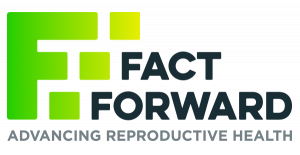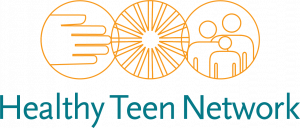Puberty is a time of physical, emotional, and social changes that can cause some young people great angst. Equipping students with the knowledge and skills about these changes can help them navigate through this challenging time and emerge strong, happy, and healthy. This workshop will provide you with a number of lessons to teach students about the changes of puberty, and will help you improve your skills on addressing this sensitive topic in an inclusive way. This workshop can be tailored to meet the specific needs of your group, school, or agency. All content is aligned with the National Sexuality Education Standards, the National Teacher Preparation Standards for Sexuality Education, and the Professional Learning Standards for Sex Education.
Training Hub
The Sex Education Collaborative Training Hub lists trainings for sex educators, facilitators, and other professionals on best practices for sharing important information with clients and the public. From teaching anatomy inclusively to effectively addressing bias in the classroom to addressing racial justice and equity in sex education, the Training Hub includes trainings, technical assistance, and policy support from state, regional, and national leaders in the field of sex education.
Please note: The Training Hub includes both in-person and online professional trainings. If you see a training you are interested in and it isn’t listed as virtual, please reach out directly to any of our members to find out what's possible!
Trainings Offered by State-Based and National Organizations
Displaying results 116 - 120 of 137Puberty 101: Teaching about the Birds and the Bees
- Indicator 2 (K-12): Demonstrate three student-centered instructional approaches that support a variety of learning styles. (S)
- Indicator 2 (K-12): List three physical, three social, and three emotional changes that occur during puberty.
- Indicator 3 (K-12): Identify three practices that students can adopt for maintaining healthy habits beginning during puberty.
Foundations: Core Skills Training for Sex Ed
In this training, participants will become familiar with the Foundations model to implement high-quality sex education. Foundations aims to ensure that sex educators have the skills to effectively facilitate student learning, create safe and inclusive environments, and provide opportunities for skill-building and values exploration.
This training has an option of additional 1-2 days addressing cultural proficiency, LBGTQ inclusion, common learning strategies, and/or trauma-informed care.
This training is designed for teachers and adults working with young people implementing an evidence-based program.
- Indicator 1 (K-12): Define conscious and unconscious bias and explain how they could influence one’s teaching of sex education.
- Indicator 2 (K-12): Describe three impacts that conscious and unconscious bias could have on cross-cultural interactions when teaching sex education.
- Indicator 3 (K-12): Explain how an educator’s personal beliefs about racial and reproductive justice could influence their teaching of sex education.
- Indicator 4 (K-12): Describe three strategies to reduce the impact of conscious and unconscious bias and enhance cross-cultural interactions in the classroom when teaching sex education.
- Indicator 1 (K-12): Demonstrate three techniques to create an inclusive and affirming learning environment. (S)
- Indicator 2 (K-12): Demonstrate three strategies for creating culturally responsive classrooms. (S)
- Indicator 3 (K-12): Describe three elements of a trauma-informed approach to sex education.
- Indicator 4 (K-12): Demonstrate three strategies of a trauma-informed approach to sex education (e.g. giving trigger warnings before content on sexual assault and allowing students the right to pass as appropriate, etc.). (S)
- Indicator 2 (K-12): Demonstrate three student-centered instructional approaches that support a variety of learning styles. (S)
- Indicator 3 (K-12): Explain the differences between positive vs. shaming approaches to teaching sex education.
- Indicator 4 (6-12): Demonstrate how to use the experiential learning cycle when teaching. (S)
- Indicator 5 (K-12): Describe three effective strategies for practicing skills with students.
- Indicator 1 (K-12): Explain three reasons why it is important to respond to every question students ask when teaching sex education.
- Indicator 2 (K-12): Demonstrate the ability to effectively respond to three different types of challenging questions. (S)
- Indicator 1 (K-12): Explain the differences between personal and universal values relating to sexuality.
- Indicator 2 (K-12): Describe how verbal and nonverbal expression of personal values, and comfort with topics related to sex education, could impact one’s teaching
- Indicator 3 (K-12): Explain the importance of educators refraining from sharing their personal values when implementing sex education.
- Indicator 4 (K-12): Demonstrate the ability to respond effectively to students’ values-based comments and questions. (S)
SIECUS’ policy team brings to bear 55 years of research-based expertise on comprehensive sex education to ensure that public policies reflect best practices and current research in support of our nation’s young people. Our agenda is simple: SIECUS advances comprehensive sexuality education as a means of building a foundation for a long-term culture shift that will positively impact all levels of society, particularly issues of gender equity, sexuality, sexual and reproductive health, consent, personal safety, and autonomy. Through technical assistance to states, SIECUS’ staff support states in educating advocates and policymakers about providing rights-based sexuality information and education at the federal, state, and local levels and leading, strengthening, and developing partnerships with other organizations, coalitions, and initiatives to advance policies that promote positive sexual and reproductive health outcomes across the lifespan. Technical assistance is focused on meeting a state’s immediate needs in a timely way.
Managing Sensitive Issues: Effectively Responding to Controversy
Educators and others who work with youth often feel anxious about addressing sensitive issues—such as topics associated with strong personal values—in the classroom, whether they are part of a curriculum or surface in a general class discussion. Sexuality, alcohol and other drugs, politics, race, and bullying are just a few examples of issues that, if not handled sensitively, could result in alienated students or angry parents contacting the school or agency. The most common topic targeted in this training is sexuality education, but the focus can be adjusted based on participants' needs. Participants identify the sensitive topics they face in their workplace and have the opportunity to assess their personal values, consider student diversity, and build the skills needed to answer difficult questions. The facilitator shares a set of proven strategies for responding to questions related to sensitive topics and harassing/bullying statements, and participants practice effective responses to build their skills.
Objectives of this course:
- Identify a range of personal and community-based values.
- Explore a set of effective facilitation techniques for addressing difficult issues.
- Practice using the techniques to effectively answer a variety of difficult questions.
- Practice using the techniques to effectively respond to harassing/bullying comments.
- Develop a personal plan of action to master the facilitation practices.
Visit ETR's Training & TA Form to submit your request and receive cost information.
- Indicator 1 (K-12): Demonstrate three techniques to create an inclusive and affirming learning environment. (S)
- Indicator 1 (K-12): Demonstrate the ability to build rapport with students. (S)
- Indicator 2 (K-12): Demonstrate three student-centered instructional approaches that support a variety of learning styles. (S)
- Indicator 3 (K-12): Explain the differences between positive vs. shaming approaches to teaching sex education.
- Indicator 1 (K-12): Explain three reasons why it is important to respond to every question students ask when teaching sex education.
- Indicator 2 (K-12): Demonstrate the ability to effectively respond to three different types of challenging questions. (S)
- Indicator 3 (K-12): Explain the importance of educators refraining from sharing their personal values when implementing sex education.
- Indicator 4 (K-12): Demonstrate the ability to respond effectively to students’ values-based comments and questions. (S)
Privacy & Confidentiality for Adolescents Accessing Sexual & Reproductive Health Care
What are the basics of maintaining privacy and confidentiality for adolescents accessing sexual and reproductive health care? Learn as you follow the story of Kendall, a 16-year-old who visits her school-based health center. Please download the Privacy & Confidentiality Worksheet before beginning the course. Throughout the course, you will be asked to reflect and respond to various situations.
- Indicator 1 (K-12): Demonstrate three techniques to create an inclusive and affirming learning environment. (S)
- Indicator 3 (K-12): Describe three elements of a trauma-informed approach to sex education.
Additional Trainings offered by out-of-state organizations
- ‹ previous
- 30 of 49
- next ›
LGBTQIA+ Student Rights and Advocacy in Michigan Schools
LGBTQIA+ students have the right to a safe and healthy learning experience in the state of Michigan. Students and educators, however, are often unaware of these rights. In this training, participants will identify and state the implications of key legal and policy issues affecting LGBTQIA+ students and safe school environments in Michigan.
In this training, participants will:
- Indicator 1 (K-12): Explain how availability of supportive school staff, presence of Gay-Straight Alliances (GSAs), LGBQ-inclusive curricular resources, and the presence of comprehensive, enumerated anti-harassment school policies are related to improved school climate for students of all sexual orientations.
- Indicator 4 (K-12): Demonstrate the use of inclusive and affirming language. (S)
- Indicator 5 (K-12): Demonstrate the ability to intervene effectively in homophobic and other bullying comments and actions. (S)
- Indicator 6 (K-12): Explain three ways that LGBQ+ youth are at disproportionate risk for health disparities.
- Indicator 8 (K-12): Explain why it is essential to include positive portrayals of LGBQ+ people in lessons.
- Indicator 1 (K-12): Explain how availability of supportive school staff, presence of Gay-Straight Alliances (GSAs), gender-inclusive curricular resources, and the presence of comprehensive enumerated anti-harassment school policies are related to improved school climate for students of all gender identities.
- Indicator 2 (K-12): Demonstrate the use of inclusive and affirming language. (S)
- Indicator 6 (K-12): Explain three ways that transgender and gender expansive youth are at disproportionate risk for health disparities.
- Indicator 8 (K-12): Explain why it is essential to include positive portrayals of transgender and gender expansive people in lessons.
- Indicator 1 (K-12): Explain the differences between personal and universal values relating to sexuality.





